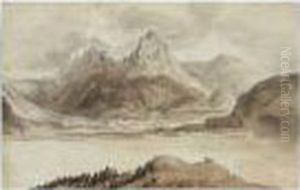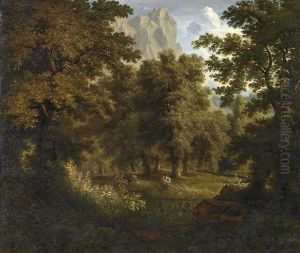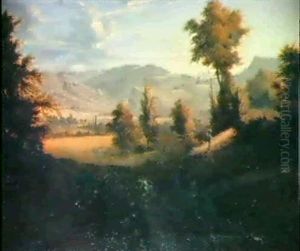Jakob Christoph Miville Paintings
Jakob Christoph Miville, also known as Jacques Christophe Miville or more commonly Miville de Chêne, was a Swiss painter who was born on January 6, 1786, in Basel, Switzerland. Not as widely recognized as some of his contemporaries, Miville's work nonetheless contributes to the rich tapestry of European art in the late 18th and early 19th centuries.
Miville's artistic journey began in his hometown of Basel, where he initially studied. His passion for art led him to further his education in Paris, which was then the epicenter of the art world. In Paris, Miville was exposed to the neoclassical style prevalent at the time, which undoubtedly influenced his own artistic development. His style merged the Swiss inclination towards detailed realism with the neoclassical principles of harmony, clarity, and strong linear quality.
Throughout his career, Miville produced a number of portraits, historical scenes, and landscape paintings. Like many artists of his time, he sought to capture the essence of his subjects with both precision and emotional depth. Miville's work reflects a dedication to craftsmanship, as well as an engagement with the aesthetic and thematic preoccupations of his era.
Unfortunately, Miville's career was relatively short-lived. He died prematurely at the age of 50 on April 19, 1836, in Basel. While his oeuvre may not have achieved the enduring fame of some of his peers, Miville's contributions to Swiss art remain noteworthy. His paintings are characterized by their technical skill and the subtle interplay of light and shadow, which bring his subjects to life. Despite the scarcity of extensive documentation on his life and work, the art he left behind continues to be appreciated by art historians and collectors who have an interest in the period and region in which he worked.


